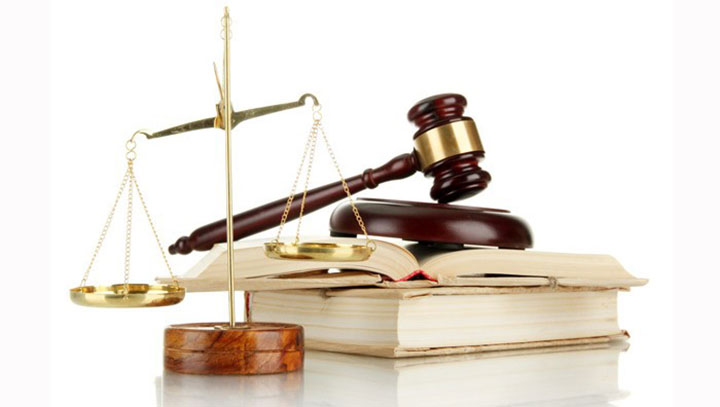Debt collection from counterparties
Debt Collection: Legal Procedures and Practical Approaches
In today's complex economic environment, debt collection has become an increasingly critical aspect of financial management for businesses and individuals alike. This article explores the various methods and legal procedures involved in debt collection, providing insights into the process from initial legal action to executive proceedings.
Legal Action for Debt Collection
The process of debt collection often begins with a legal action. When amicable attempts to recover a debt fail, creditors may resort to filing a debt collection lawsuit. This involves preparing a comprehensive claim that outlines the debt's origin, amount, and any attempts made to recover it. The lawsuit serves as a formal demand for payment and initiates the legal process.
Key components of a debt collection lawsuit include:
1. Identification of parties involved
2. Detailed description of the debt
3. Evidence supporting the claim
4. Specific relief sought (e.g., monetary compensation, interest)
Forced Debt Collection Under a Credit Agreement
Credit agreements often contain clauses that facilitate forced debt collection. When a debtor defaults on a credit agreement, the creditor may initiate forced debt collection procedures. This process typically involves:
1. Formal notice of default
2. Acceleration of the debt (if applicable)
3. Legal action for repayment
4. Potential seizure of collateral
The decision of the court on credit debt collection is a crucial milestone in this process. It provides legal backing for the creditor to pursue more aggressive collection methods if necessary.
Debt Collection Procedure by the Executive Service
Once a court decision is obtained, the creditor can engage the executive service for debt collection. The procedure for debt collection by the executive service typically includes:
1. Filing an application with the executive service
2. Issuance of an enforcement order
3. Identification and seizure of debtor's assets
4. Sale of assets to satisfy the debt
5. Distribution of proceeds to the creditor
Executive proceedings on debt collection are governed by specific laws and regulations that ensure fairness and transparency in the process.
Debt Collection for Utility Services Without a Contract
A unique challenge arises in cases of debt collection for utility services without a contract. In such situations, the utility provider must prove:
1. The actual provision of services
2. The debtor's consumption of these services
3. The reasonable value of the services provided
Legal action for cancellation of debt for utility services may be initiated by the debtor if they dispute the charges. This often requires demonstrating errors in billing or proving non-receipt of services.
Forced Debt Collection
Forced debt collection is a last resort when all other attempts to recover a debt have failed. It involves using legal means to compel payment, often through:
1. Wage garnishment
2. Asset seizure
3. Lien placement on property
The forced collection of debt by the executive service is a structured process that ensures compliance with legal requirements while seeking to satisfy the creditor's claim.
Debt Collection by Receipt
In cases where a debt is acknowledged through a receipt or IOU, debt collection by receipt becomes relevant. The process typically involves:
1. Verifying the authenticity of the receipt
2. Proving the transfer of funds or goods
3. Demonstrating the debtor's failure to repay
Debt collection by receipt court practice shows that courts generally favor creditors when presented with clear, unambiguous receipts. However, debtors may challenge the validity or terms of the receipt.
Alimony Debt Collection
Alimony debt collection is a specialized area with its own set of rules and priorities. It often involves:
1. Automatic wage deductions
2. Interception of tax refunds
3. Suspension of licenses (e.g., driver's license)
4. Potential criminal charges for willful non-payment
The process of alimony debt collection is designed to ensure the financial support of dependents and is often given priority over other types of debt collection.
How to Record Debt Collection Through the Court
Proper accounting for debt collection through court proceedings is crucial for businesses. The process typically involves:
1. Recording the original debt as an account receivable
2. Creating a provision for doubtful debts
3. Adjusting entries based on court decisions
4. Recording legal fees and other collection costs
5. Recognizing recovered amounts as income
Accurate recording ensures compliance with accounting standards and provides a clear financial picture of the collection process.
Collection of Tax Debt
The collection of tax debt follows a specific set of procedures outlined by tax authorities. It may include:
1. Issuance of tax liens
2. Levies on bank accounts or property
3. Wage garnishment
4. Negotiation of payment plans
Tax authorities often have broader powers in debt collection compared to private creditors, making tax debt collection a particularly serious matter.
Claim to the Commercial Court for Debt Collection
In business-to-business transactions, a claim to the commercial court for debt collection is often necessary. The process in 2024 typically involves:
1. Preparation of a detailed claim outlining the business relationship
2. Provision of supporting documents (contracts, invoices, correspondence)
3. Demonstration of attempts to resolve the issue amicably
4. Specific request for judgment and any additional damages or interest
Commercial courts often handle these cases with an understanding of business practices and the need for efficient resolution.
Debt collection is a complex process that requires a thorough understanding of legal procedures and practical approaches. From initial legal action to executive proceedings, each step in the debt collection process plays a crucial role in recovering owed funds.
The various methods of debt collection - whether for credit agreements, utility services, alimony, or tax debts - each have their unique characteristics and challenges. Understanding these nuances is essential for both creditors seeking to recover debts and debtors facing collection actions.
Proper documentation, adherence to legal procedures, and accurate accounting are key to successful debt collection. In many cases, engaging professional legal assistance can significantly improve the chances of successful debt recovery while ensuring compliance with all relevant laws and regulations.
As economic conditions continue to evolve, the importance of effective debt collection practices cannot be overstated. By staying informed about the latest legal developments and best practices in debt collection, businesses and individuals can better protect their financial interests and maintain healthy economic relationships.
Moreover, the collection of debt remains a critical aspect of financial management, requiring a nuanced understanding of various legal and practical approaches. The collection of debt by the executive service, in particular, plays a vital role in enforcing court decisions and ensuring that creditors can recover what is rightfully owed to them. This process, while sometimes viewed as a last resort, is an essential component of a functioning credit system.
In recent years, there has been an evolution in the approaches to debt collection, particularly in commercial contexts. The claim to the commercial court for debt collection in 2024 has seen significant changes, reflecting the dynamic nature of business relationships and the increasing complexity of financial transactions. Courts are now more attuned to the intricacies of modern business practices, often considering factors such as industry standards and the broader economic context when making their decisions.
One area that continues to be of particular interest is the claim for debt collection by receipt. This method of debt recovery, while seemingly straightforward, can often present unique challenges. The debt collection by receipt court practice has shown that while courts generally view receipts as strong evidence of debt, they also scrutinize the circumstances under which these receipts were issued. Factors such as the clarity of the terms, the mental capacity of the parties involved, and any evidence of coercion or fraud are carefully considered.
As we move forward, it's clear that the landscape of debt collection will continue to evolve. Technological advancements are likely to play an increasingly significant role, potentially streamlining processes and providing new avenues for both debt collection and dispute resolution. However, the fundamental principles of fairness, transparency, and legal compliance will remain at the core of effective debt collection practices.
In conclusion, while debt collection can be a challenging and sometimes contentious process, it remains an essential component of a healthy economic system. By staying informed about the latest developments in debt collection practices and legal procedures, creditors can maximize their chances of successful recovery while debtors can better understand their rights and obligations. As always, seeking professional legal advice when dealing with complex debt collection issues is advisable to ensure the best possible outcomes for all parties involved.
So, executive proceedings on debt collection are a legal process initiated by a creditor to enforce a court order or other enforceable instrument to collect a debt from a debtor.

































